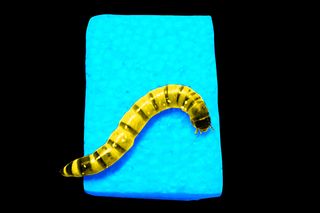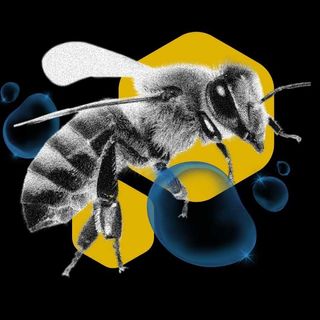
‘Superworm’ That Munches Through Plastic Can Revolutionize Recycling
“The breakdown products from this reaction can then be used by other microbes to create high-value compounds such as bioplastics.”

There’s a creature that can survive just on styrofoam — basically, the material we use for our food packaging is its food. Whether it’s called a “superworm” because of its abilities that are nothing short of superpowers for the planet, isn’t clear. But what is becoming widely known rather quickly is its potential to revolutionize recycling.
Styrofoam threatens the environment. It takes about 500 years to decompose, if not more; it is non-biodegradable, and until now, has also been understood to be non-recyclable. Not only that, while it’s sitting under the sun in landfills — for centuries, that is — it produces toxic pollutants which contribute to global warming by depleting the ozone layer. In addition, it can leach chemicals into water bodies too.
And so, published in Microbial Genomics, the study that delved into the ability of the darkling beetle (Zophobas morio) — as the superworm is otherwise known — to munch through plastic, can be rather revolutionary in terms of ridding the world of styrofoam pollution.
“Superworms are like mini-recycling plants, shredding the polystyrene with their mouths and then feeding it to the bacteria in their gut,” explained Christian Rinke from the University of Queensland’s School of Chemistry and Molecular Biosciences, who co-authored the study.
Related on The Swaddle:
Scientists Discover How to Convert Plastic Waste Into Vanilla Flavoring
To look into this unique ability of darkling beetles, the researchers divided them into different groups — some were fed bran, some polystyrene (that styrofoam is made of), and the rest were fed nothing. This went on for three weeks. The researchers found that while bran was superior to polystyrene — in terms of both the weight gained by the beetles and how active they were at the end of the three-week period — it wasn’t entirely unhealthy, at least, compared to the starvation diet.
“They have to get the energy from somewhere… Polystyrene is definitely a poor diet. [But] the worms can survive it — they don’t look sick or anything,” Rinke noted. However, the good news is that if the findings were to be implemented on a large enough scale, throngs of superworms won’t have to munch only on styrofoam from sunrise to sunset — as though fixing problems created by human beings is their species’ responsibility.
Instead, in a bid to create a mechanized shredding process, scientists hope to mass-produce the enzymes from the beetle’s gut that enable it to digest the plastic. This can only happen, though, once the scientists have successfully identified the most effective enzyme for the process. Once accomplished, “the breakdown products from this reaction can then be used by other microbes to create high-value compounds such as bioplastics,” added Rinke. He believes, “It would make the whole thing more interesting economically… It would create something sought after.”
In other words, it might be able to create something akin to a circular economy — a regenerative economic system that eliminates waste by continuously using the same finite resources we have.
Related on The Swaddle:
How soon that’ll be, no one knows yet. “The scale-up and translation of research like this is always a challenge, which is magnified in the area of plastics by the incredible scale of the problem and the economics in terms of how cheap new plastic is to produce,” Colin Jackson from the Australian National University’s Research School of Chemistry, who wasn’t involved with this study, opined.
The fact, however, remains that superworm-enzymes are simply a cure to the issue of plastic pollution; what’s, perhaps, wiser is researching alternatives to styrofoam that aren’t nearly as hazardous to the environment. Even if scientists miraculously identify the right enzyme, find a way to begin mass-producing it, and kickstart the process of industrial recycling of polystyrene — all, in less than a week — it would still do nothing to address the fact that producing polystyrene itself creates toxic waste and contributes to global warming.
In the meantime, of course, superworm enzymes are a solution — albeit a stopgap one. Amid the joy of the present discovery though, it’s important that we remember that exact caveat: it’s temporary.
Devrupa Rakshit is an Associate Editor at The Swaddle. She is a lawyer by education, a poet by accident, a painter by shaukh, and autistic by birth. You can find her on Instagram @devruparakshit.
Related


Bumblebees Are Now Classified As Fish in California
